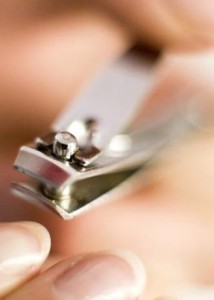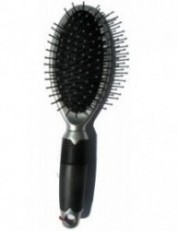List of non-standard samples
When it is not possible to perform a DNA test from a buccal sample, or the person you would like to test is not available, there are other ways to collect DNA material. 
As each cell in the human body contains DNA, the laboratory may extract DNA from any other biological sample such as dried blood, nail clippings or hair. Be aware that depending on the type and age of the sample, the probability will be between 70% and 90% to recover sufficient DNA material in order to perform the analysis.
It takes between $75 and $150 for the extraction of DNA from these non-standard samples, which are on top of to the price of the analysis and comparison of this DNA with the other test participants . Where possible, we prefer the oral (buccal) sample, which is the standard for DNA samples.
The table below shows the types of usable samples, their way of conservation, the success rate of DNA extraction.
The table below shows the types of usable samples, their way of conservation, the success rate of DNA extraction.
| Sample | Description | Conservation/Transport Method | Chance of Successful DNA Extraction |
| Blood on paper | Blood must be less then 60 days old | Leave the blood on the paper. | Over 90% |
| Sperm (frozen) | Frozen container with sperm | Container in envelope. | Over 90% |
| Fresh blood (liquid) | Keep the blood in a sample bottle Vacutainer. | Send the container in it’s original packaging. | Over 90% |
| Bone | Humerus or femur, cut with a clean tool. Need a piece of 10 cm (approx. 2 grams). Best whithin30 days of being frozen. | Kept on ice or dry as it had been preserved until shipment. | Over 90% |
| Handkerchief or Kleenex | Nasal mucus remains (snot), not that liquid collected on a cloth handkerchief or paper towel. | Let dry in the open air for one hour, then send in paper envelope. | 70-90% |
| Ear wax | Wax and some ear cells are recovered in the ear by means of two rods or cotton swabs. | Paper envelope. | 70 à 90% |
| Nails (hand or feet) | 5-10 nail clippings. If cut for less than a week, they give better results. Prefer toenails, which are less likely to have been in contact with the DNA of other people. | Paper envelope. | 70 à 90% |
| Dry blood stains | Tampax, stained tissues, bandages, blood on all types of fabric. The sample can deteriorate rapidly. | Let dry in the open air for one hour, then send in paper envelope. | 70 à 90% |
| Semen stains on fabric, clothing | Any type of tissue or underwear containing stains (dry) containing DNA, which provides a place to study. | Let dry in the open air for one hour, then send in paper envelope. | 70 à 90% |
| Fetal sample | Buccal sample of the mother needed. | Preserve as it has been preserved until then. | 70 à 90% |
| Body tissue (samples of muscles, organs) | Only non embalmed tissue taken by a pathology laboratory or tissue from surgical operations. | Place the paraffin blocks, in a sealed plastic bag or send as it was preserved. | 70-90% |
| Sperm (liquid) | If from a condom or another surface, collect DNA with sterile swab and allow to dry for 1 hour. | Paper envelope. | 70-90% |
| Test strips for blood glucose test | Provide 5-6 test strips | Paper envelope. | 70 à 90% |
| Umbilical cord | A small piece of dry cord, or umbilical cord clamp. As it was in contact with the mother, bring a buccal sample of the mother too. | Paper envelope. | 70 à 90% |
| Teeth | Variable according to the teeth prefer a molar, premolar or canine that has been extracted for less than two years. Often baby teeth do not have enough DNA. | Paper envelope. | 70% or less |
| Cigarette butts | 2-3 butts at least. The laboratory analysis of saliva deposited on the cigarette filter. Are you certain that cigarettes were smoked by the same person? | Let dry in the open air for one hour, then send in paper envelope. | 70% or less |
| Toothpicks / dental floss | Don’t touch the samples with your hands | Let dry in the open air for one hour, then send in paper enevelope. | 70% or less |
| Post mortem body tissue | For body tissue collected after death and embalmed by the funeral agency. | Kept on ice or dry as it had been preserved until then. | 70% or less |
| Hair | Make sure the roots / follicles are present. Ideally provide 7-10 hair. Do not send shaven or cut hair. Examine the contents of a hairbrush to find those roots. | Ship in a plastic bag or in a paper envelope. Do not touch the follicles with his fingers. | 70% or less |
| Razor Blades | Send blades or disposable razor. Do not touch with his fingers. | Let dry in the open air for one hour, then send in paper envelope. | 70% or less |
| Beard cut (Residues of an electric razor) | Collect the remnants of cut beard and dead cells within the razor. Do not touch with fingers. | Let dry in the open air for one hour, then send in paper envelope. | 70% or less |
| Toothbrush | Toothpaste makes it more difficult to extract DNA. Do not touch the head of the brush. Let dry 1 hour in the open air. | Let dry in the open air for one hour, then send in paper envelope. | 70% or less |
| Chewing-gum | Preferably, a sugar free chewing gum, which has been masticated during at least 5 minutes. The saliva is analyzed that was deposited therein. Do not touch with fingers. | Let dry one hour before placing it in a sealed plastic bag. | 70% or less |
| Straws, cans, plastic cups or bottles of children | Let dry. Collect saliva with a swab or send the glass marking the spot to analyze. | Paper envelope | 70% or less |
| Envelope / licked stamps | Closed envelope, postcard or any other licked mail. The success rate depends on the age of the envelope and the adhesive used. | Paper envelope | 70% or less |
Important:
Samples must be handled with gloves or a clean, dry tool to avoid the risk of contaminating DNA with your fingers. You must be certain that no one else could get in touch with your sample (personal hairbrush, butts smoked by one person).
Non standard samples success rate indicates the probability that the laboratory manages to recover enough DNA on the sample in order to reconstitute the complete DNA profile of the person being tested. It is essential work that must be performed on these non-standard samples before starting to compare the DNA profiles of participants. When enough DNA has been recovered, reliability and accuracy of the test results will be the same regardless of the type of sample used.
The analysis of DNA samples from non-standard takes a longer processing time by laboratory workers and different equipment. Many laboratories are not able to perform the analysis of these samples . You will be asked an extra charge between $ 80 and $ 150, which will be added to the price of selected DNA test. This fee is not refundable in the event that the laboratory could not extract enough DNA from the sample provided – or that DNA was too degraded by time – for the work of extraction have already been carried out on the sample that you have submitted them. In this case, it would submit a new sample to the lab to try again to reconstruct the DNA profile of the person tested, and you will need to pay a processing fee of this extra sample. Only once the DNA profile of the missing person has been reconstituted, it will be possible to begin the comparison of DNA profiles with relatives. The laboratory will require 5 working days for the DNA extraction.
Few laboratories are capable to process discrete samples without the consent of the participants. Even though the laboratories do not have the ability to check the age of the participants for tests at home, here is the rule that is most often applied: when the participant is a minor under 16 years, one of its legal representatives may give consent; beyond this, the child shall affix his signature. When the person is missing, however, they may accept that his direct heir giving consent for the DNA analysis of the missing parent.
